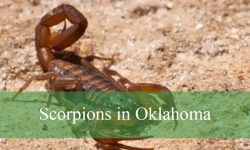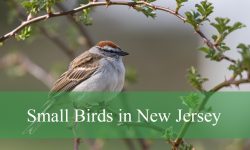Curve-toothed Geometer Moth Caterpillar is one kind of caterpillar with unique features and shapes. Come along to learn more about the Curve-toothed Geometer Moth Caterpillar in this post.
About Curve-toothed Geometer Moth
Eutrapela clemataria, commonly known as the Curve-Toothed Geometer Moth, is a captivating and distinctive species that holds a significant place within the intricate web of North America’s ecosystems. As a member of the Geometridae family, this moth exhibits a set of intriguing traits and behaviors that set it apart from its counterparts in the region.
Characteristics of Curve-toothed Geometer Moth Caterpillar
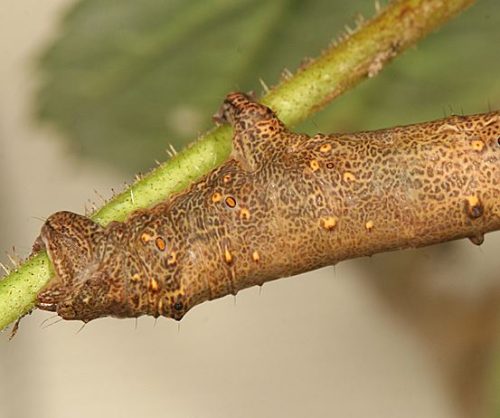
In the daytime, these caterpillars exhibit a remarkable adaptation strategy, choosing to rest motionless and inconspicuous on the branches and twigs of their host plants. With bodies rigid and straight, they blend seamlessly with the surrounding twigs, their block-like head and thorax adding to the illusion of a broken branch, effectively evading the watchful eyes of potential predators.
As night falls, a different aspect of their behavior comes to light. During these hours, the Curve-toothed Geometer Moth Caterpillar relaxes its rigid stance, initiating movements and foraging activities that lead it onto the leaves of its host plants. This nocturnal shift in behavior offers a promising opportunity for researchers to locate and observe these elusive creatures. Nighttime excursions with flashlights have proven to be instrumental in uncovering the feeding activities of various species, including the Curve-toothed Geometer Moth Caterpillar, that remain concealed during the daylight hours.
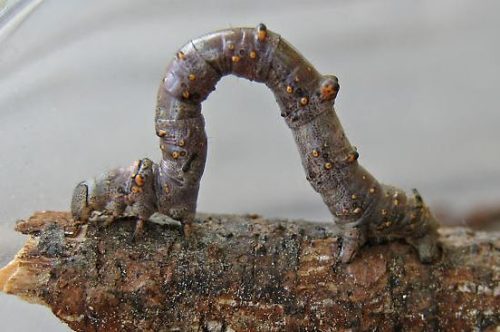
As the winter season approaches, these resilient inchworms prepare for the colder months by overwintering as pupae within the protective layers of leaf litter, ensuring their survival and subsequent emergence for the coming seasons.
Distribution and habitat of the Curve-toothed Geometer Moth
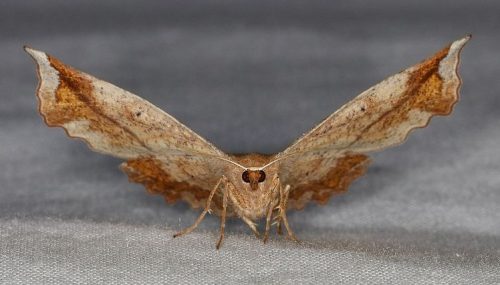
The Curve-toothed Geometer Moth has been recorded across a diverse geographical range, spanning from Nova Scotia to Florida in the east, and from Texas to Saskatchewan in the west. This wide distribution signifies the adaptability of the species to various climates and habitats. The moth primarily thrives in deciduous and mixed woodlands, where it finds an abundant food supply and a suitable environment for reproduction and growth.
Its choice of habitat reflects its preference for environments rich in common trees such as ash, oak, and maple, where the caterpillars can feed on the leaves and mature into their adult form. This specific ecological niche further highlights the species’ significance within the complex network of North American woodlands.
Morphological Characteristics and Body Structure
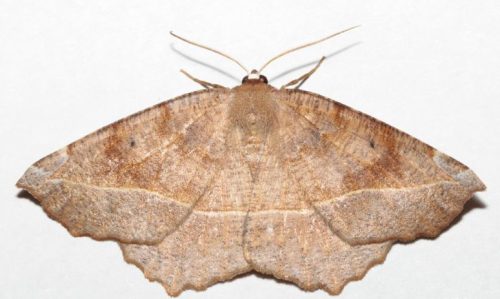
In terms of wing size and coloration, the The Curve-toothed Geometer Moth showcases a wingspan ranging from 38 to 56 millimeters. The wings exhibit a remarkable blend of colors, with a base of yellowish-tan complemented by intricate patterns of brownish-grey or brown mottling. This unique combination of hues not only aids in camouflaging the moth within its natural habitat but also adds to its aesthetic appeal, making it a visually captivating species within the woodlands of North America.
Alongside its wings, the Curve-toothed Geometer Moth possesses several distinctive features on its body that contribute to its recognizable appearance. When at rest, the moth displays a definitive line that crosses from left to right, creating a stark demarcation between the dark brown coloring near its head and the lighter brown shades at the edges of the wings. Furthermore, the outer edge of its forewings elegantly curves downward, culminating in a distinctive nubby point or tooth at the tips of the wings. Complementing this, the hindwings exhibit scalloped edges, adding an extra layer of intricacy to the overall visual presentation of this remarkable moth species.
People Who Read This Also Read:

